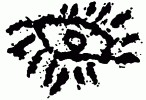| |
ROCK ART AND THE CULT OF STONES
Har Karkom's plateau and surrounding valleys
include an immense assemblage of rock art: about one thousand engraved rocks
display over 40,000 rock engravings. This vast collection of art has been the
primary motivation to explore and research this area. Several rock art sites on
the mountain appear to have been used for events that prescribed the arranging
of stone circles, the erection of standing stones and the lighting of large
fires. It appears that surfaces cleared of stone rubble were piled with wood or
other fuels and set ablaze; even after the passage of millennia conspicuous
traces remain of the fires that were produced, such as fire chips on hundred of
flints in these areas. The size of the burnt area is sometimes more than twenty
meters in diameter. In some cases such fires remind one of the traditional
funerary pyres of India, but no fragments of bones have been found. It is still
not clear with what occasions or performances these conflagrations were involved.
In several cases such areas of pyres are connected with rock art
concentrations, which offer further clues but no certain answers to the role of
the fires.
From our current information, the rock art in
the Islamic period, and probably also during Roman-Byzantine times, was often
non-religious in its creation and subject matter, allowing all sorts of
descriptive and anecdotal figures to be represented. In the Bronze Age, on the
other hand, most of the rock art was a matter of cult, and the depictions
related mainly to worship. The connection between the fires and rock art is not
easily explained; one can readily imagine, however, the effect fires of such
proportions and such distant visibility might have.
|



